|
There’s a common misconception out there that a person experiencing lower back pain must have a core that is “unstable.” It’s a thought process that intuitively makes a little bit of sense, but if you dig a bit deeper below the surface, you’ll find it’s rarely the case. Study after study has shown that core exercises are no more effective than general exercise when it comes to addressing lower back pain. Before we get into several reasons why lower back pain doesn’t always equal an unstable core, let’s look at the theory behind it. When most people refer to “core stability,” they are referring to the muscles that lie deep within the torso (think the muscles around the abdomen). Muscles generally accepted in this group are: the diaphragm, lumbar mutlifidus, transverse abdominis and the muscles of the pelvic floor, which link most closely to the spine. Because these muscles act most immediately on the spine, the surface level thought is that they must not be working properly in people with lower back pain… or they must not be providing the proper stability to the spine. This is a far too oversimplified way of thinking about the body, and would be similar to assuming the wheels on your car don’t turn because the axel isn’t strong enough. Yes, it’s possible, but there are hundreds or even thousands of other variables that may be going on that contribute to the wheels on the car not turning. The same can be said about lower back pain and core stability. Pain is complex. Movement is complex – we need to go deeper than the surface to find meaningful (and productive) solutions. Unfortunately, this means that we can’t just point to the simplest possible answer (core instability) and say it’s why you’re having lower back issues. Let’s look at the assumption a little more closely, and we’ll see how wrong it can be… The core stabilizers are meant to do just that, provide stability. In a general sense, they’re meant to absorb tiny forces around the spine to maintain balance. Just think about the exercises and tools we use to isolate these muscles… bosu balls, physioballs, and balance boards. We’re not moving tremendous amounts of weight or moving with high velocities when we’re isolating these muscles, because that’s not what they’re designed to do. Now, let’s think about the muscles that we DO train with heavy weight and high velocities. These would be ‘mover’ muscles like the calves, hamstrings, quads, and glutes. They help to create and absorb tremendous amounts of force – not only in the gym, but in our day to day lives. They are the main drivers for movements like bending over to pick something up, walking, jumping, and climbing the stairs. Looking at it this way, if either of these types of muscles (the smaller core muscles or larger ‘mover’ muscles) were unable to absorb force properly throughout the day, which do you think would contribute more to additional stresses on the spine (and possibly lower back pain). I think the answer’s obvious – you would expect any dysfunction in the larger ‘mover’ muscles to play a much larger role in keeping stresses off the spine.. and it matches what we find with nearly all of our clients with lower back pain. Rarely does our assessment process indicate any need to improve core strength. This is just one great example of the many myths out there about lower back pain (and rehabilitation in general). If we look at problems within the body at the surface, you’ll get surface level solutions. I encourage you to take a step back, whether you’re dealing with back pain or another issue, and dig at least 1 level deeper to find more meaningful (and hopefully productive) solutions. Local to the Towson, Lutherville-Timonium, Cockeysville, or Hunt Valley area? Friends & Family receive a FREE
Discovery Session at Premier!
0 Comments
Put down that painkiller. Study shows they don’t relieve back pain and may make it worse.11/26/2017 A few weeks ago, I was finishing up my day and received a call from a prospective client. He was calling because he was suffering with back pain and had tried just about everything to make it go away. Local to the Towson, Lutherville-Timonium, Cockeysville, or Hunt Valley area? Friends & Family receive a FREE Discovery Session at Premier! When I get a call like this, I try to take as much time as possible to listen to the caller and really understand his or her situation. I listen as they tell me how long it’s been going on, if anything else has provided relief, and how the problem is affecting his or her day to day life. I want to know what the problem is costing them, so I can figure out the best path forward. **If you'd like to schedule a time to talk to a therapist, just click here** After getting a sense of the problems that back pain was causing in his life, I came to the conclusion that we might be able to help, and asked what he would like the next steps to be? I was shocked by his answer. “Well…....I was hoping you guys could write me a prescription for more painkillers.” (We can’t write prescriptions.) It immediately became clear to me that this was his goal all along – he had no interest in actually solving the problem. His only interest was continuing to mask the symptoms with painkillers.. Based on the way he asked the question, I fear he had actually become addicted, and was looking for a way to get a drug fix. This is a sad reality for entirely too many people dealing with back pain. If you are feeling that painkillers might be your only solution to overcoming back pain, it’s might be because of some bad advice you’ve received along the way. According to a new NPR-Truven Health Analytics Health Poll, 40% of patients dealing with back pain were prescribed prescription painkillers by a doctor. Those 40% of doctors are going against the latest guidelines released by the American College of Physicians (ACP) in April , which advises against painkillers as a first line of treatment for back pain. It's likely that the ACP made this decision based on studies like this one recently conducted by the George Institute for Global Health in Australia. The study revealed that only 1 out of 6 patients achieved any significant pain relief with painkillers. Add in that painkillers are expensive, double the risk of gastrointestinal problems and stomach ulcers and may become addictive, and you might be starting to wonder why painkillers would ever be prescribed. Back pain is a complex, multi-factorial problem with many different unique causes. I can assure you that no one suffers from back pain due to a lack of Tylenol, Aleve, or Oxycontin. If you’re interested in truly solving the back pain problem and getting back to a more active lifestyle, stop taking painkillers – the data shows it’s not helping and likely causing the issues to get worse. If you’re interested in seeing what you can do instead, just click here: **Click here to read a blog post about what you can do instead of taking painkillers** Please don’t hesitate to reach out with any questions or concerns – I’m always happy to help! All the best, Evan Local to the Towson, Lutherville-Timonium, Cockeysville, or Hunt Valley area? Friends & Family receive a FREE Discovery Session at Premier! ====
Interested in a trying an innovative, new approach to getting to the root cause of back pain? Here's 3 Ways To Find Out If Working With a Neuro Therapist Can Help You (just click what's best). 1) Inquire About Neuro Therapy Cost And Availability 2) Schedule a FREE 15 Min Call With a Therapist To Find Out If Neuro Therapy Can Help You 3) Enter our drawing (limited time only) to win a free Neuro Therapy session If you or someone you know is dealing with annoying back pain, here's 7 Quick & Easy Tips To Reduce Back Pain. Just go here to get your free copy. www.premierneurotherapy.com/back-pain or click here: A few weeks ago, a personal training friend of mine referred one of his clients, a high school basketball coach in the area, to come in for a Neuro Therapy session. Coach had been suffering from a herniated disc for months, and it was limiting his ability to keep up with his players on the court. Local to the Towson, Lutherville-Timonium, Cockeysville, or Hunt Valley area? Friends & Family receive a FREE Discovery Session at Premier! It seems that my initial conversations with people who are struggling with a disc condition (bulging, herniated, slipped, degenerative) are always very similar. **Click here to arrange a 15 minute call with a Premier team member and find out if Neuro Therapy can help you to avoid surgery** 9 out of 10 people who approach me with this condition believe it can’t be fixed without surgery (Coach was one of the 9). They’ve been told it’s something they just have to ‘live with’ unless they want to go under the knife (it just so happens that Coach never experienced anymore issues with his bulging disc after 1 Neuro Therapy session, but that’s a story for another day…) There’s several studies out there that indicate a non-surgical approach is almost, if not equally, effective to a surgical approach for disc conditions. Rather than get into whether or not surgery is more effective than a non-surgical approach, I thought I’d give you all of the information needed (risk vs reward) to make a better decision for yourself. Watch below - Multiple doctors told Julian that surgery was his only solution, but Neuro Therapy helped him to avoid surgery and get back on his feet. We’ll start with the ‘good news’ or ‘reward’ on surgery- Reward A 2016 study (1) that compared outcomes for a total of 370 patients determined the following benefits for surgical intervention:
It should be noted that these benefits were only statistically significant in the timeframes given. In other words, there was no difference in pain levels between surgical and non-surgical methods at 12 week, 1 year, and 2 year follow-ups. So, according to this report, the potential reward with surgery is that you might feel a little better 6 weeks after surgery than if you tried a non-surgical approach. Another important item to note is that the non-surgical approach did help to reduce symptoms, meaning disc conditions can be addressed without surgery. **If you haven't tried Neuro Therapy yet, it may be able to help you avoid surgery. Click here to arrange a call with a Premier team member** Risks Now let’s take a look at the risks of herniated disc surgery…
There’s a quick breakdown around the risks and rewards associated with surgery for disc conditions (bulging, herniated, slipped). You are now armed with more information to make a better decision about what’s right for you. If you have any questions, please don’t hesitate to reach out – I always enjoy helping people to better understand their situation. Sources: 1) Gugliotta M, da Costa BR, Dabis E, et al. Surgical versus conservative treatment for lumbar disc herniation: a prospective cohort study. BMJ Open 2016;6:e012938. doi:10.1136/bmjopen-2016- 012938 2) “How Much Does Herniated Disc Surgery Cost? - CostHelper.com.” CostHelper, health.costhelper.com/herniated-disc-surgery.html. Local to the Towson, Lutherville-Timonium, Cockeysville, or Hunt Valley area? Friends & Family receive a FREE Discovery Session at Premier! ====
If you haven't tried Neuro Therapy yet, it might be able to help you avoid surgery. Here's 3 Ways To Find Out If Working With a Neuro Therapist Can Help You (just click what's best). 1) Inquire About Neuro Therapy Cost And Availability 2) Arrange for a FREE 15 Min Call With a Premier Team Member To Find Out If Neuro Therapy Can Help You 3) Enter our drawing (limited time only) to win a free Neuro Therapy session If you or someone you know is dealing with annoying back pain, here's 7 Quick & Easy Tips To Reduce Back Pain. Just go here to get your free copy. www.premierneurotherapy.com/back-pain or click here: One of the most common conditions I see at Premier is lower back pain in golfers. A golf swing can put tremendous amounts of force on the spine, leading to fatigue, stress, potential tissue damage, and pain. Local to the Towson, Lutherville-Timonium, Cockeysville, or Hunt Valley area? Friends & Family receive a FREE Discovery Session at Premier! Like any movement, the front line of defense for absorbing the forces of your golf swing are your muscles. In golf, this includes the muscles in the legs, core, and even upper back/shoulders. As long as all of these muscles are doing their jobs (absorbing force) properly, it’s unlikely you will experience any issues with lower back pain. However, if you have experienced lower back pain while golfing, it’s probably because a muscle or muscles are not activating properly. **Have you tried everything else, but didn't get the outcome you were looking for? Click to schedule a call with a therapist for a more personal, effective approach.** If back pain is affecting your golf game or has forced you to stop playing golf, fear not. Your body is resilient and built to take on the forces associated with a swing (without pain). It’s simply a matter of getting the muscles to activate and absorb force properly. In order to do so, you’ll need to pursue a combination of finding the right swing, identifying strength deficits and/or imbalances in the body, and ensuring you have prepped the body (and nervous system) before swinging. Here’s 3 steps to making that happen: 1) Work with a qualified strength trainer at least 2-3x/week Ask others that you golf with if they know any good strength trainers in the area. From my experience, a good strength trainer’s name travels quickly and your friends will be happy to refer you to their own. The goal of your training would not be to bulk up like a body builder, but identify strength imbalances that could be leading to your back pain. Expect to do a lot of functional training that incorporates core stability and rotational exercises. If you need any help finding someone, let me know – we’ve got a great network local to the Hunt Valley area. 2) Introduce your swing coach to your strength trainer If you have a swing coach, introduce him or her to your new strength trainer. They’ll be able to compare notes and come up with a few tips to minimize the strain on your back when you swing. If you do not have a swing coach, think about asking around to see if anyone you know has used one in the past that has been helpful in reducing pain levels. 3) Warm up properly before teeing off A proper warm up has been shown to increase club head speed, increase ball speed, and increase carry, yet the majority of golfers do not warm up before teeing off. As if better performance isn’t enough justification, a proper warm-up can also decrease your risk for injury. By warming up properly, you neurologically activate the muscles needed to absorb the force created when you swing the club. An activated muscle will do a more efficient job of keeping stress off the back, reducing the risk of injury or pain. In order to effectively warm-up, consider doing more than just static stretching (for example: a toe touch hold is not a very effective warm-up). Instead, grab a resistance band and go through a series of upper and lower body exercises. During the exercises, don’t just ‘go through the motions.’ Focus on squeezing the working muscles through the full range of motion, helping to fire up that mind-muscle connection and activate the muscles.
Local to the Towson, Lutherville-Timonium, Cockeysville, or Hunt Valley area? Friends & Family receive a FREE Discovery Session at Premier! ====
Looking for a more hands on, personalized approach to addressing your low back pain? Here's 3 Ways To Find Out If Working With a Neuro Therapist Can Help You (just click what's best). 1) Inquire About Neuro Therapy Cost And Availability 2) Schedule a FREE 15 Min Call With a Therapist To Find Out If Neuro Therapy Can Help You 3) Enter our drawing (limited time only) to win a free Neuro Therapy session If you or someone you know is dealing with annoying back pain, here's 7 Quick & Easy Tips To Reduce Back Pain. Just go here to get your free copy. www.premierneurotherapy.com/back-pain or click here: 6 Tips To Finally Get A Good Night's Sleep... Even If Back Troubles Have Kept You Up For Months11/8/2017 The other day, I was talking to one of our new clients (a 62 year old corporate CEO that I’m helping to get back on the golf course), and he mentioned a side effect to his lower back pain. “I can’t even get a good night’s sleep anymore.” Local to the Towson, Lutherville-Timonium, Cockeysville, or Hunt Valley area? Friends & Family receive a FREE Discovery Session at Premier! I reassured him that it’s not uncommon for back pain to reduce quality of sleep. It’s something we hear a lot from clients. And science indicates that they’re more closely related than you might think.. **You can reserve a time to ask a therapist your questions about Neuro Therapy by clicking here** There’s actually a vicious cycle that takes place between back pain and sleep.
and so on and so forth… So, if you’re losing sleep over back pain, it’s important to find a way to break the cycle to keep the back pain from intensifying. You might have read articles in the past on this topic that talk about choosing the right mattress, altering your sleeping position, or how to adjust your pillow. If you’ve tried those methods and they work, I couldn’t be happier for you. You’ve already found a way to break the cycle! However, in my own personal experience, I’ve found that adjusting my sleeping position or putting a pillow between my legs doesn't change much or sometimes causes me to sleep far worse. If you’re in that boat, the tips in this post are for you. The following recommendations focus not on how to physically sleep differently, but how to prepare your nervous system for a restful night’s sleep. The tips have been put together in order to ensure your nervous system is in a relaxed (parasympathetic) state at bed time. If the nervous system is in a stressful state (the sympathetic nervous system is dominant), it can both decrease your quality of sleep and amplify your back pain. 1. Stick to a sleep schedule Ideally, you should shoot for 7-8 hrs of sleep/night. Studies have shown that people who sleep 6 hrs or less actually experience more back pain than people who get more sleep. In order to hit 7-8 hrs, it helps to stick to a consistent schedule. Sticking to a schedule will also help your body to learn to relax at bedtime. 2. Don’t take work to bed with you Whatever you do, don’t get in bed with your laptop or check emails on your phone before it’s time to go to sleep. Instead, find a book that’s unrelated to business/work or listen to relaxing music before bed. It’s important to keep the stress and/or adrenaline associated with work life out of the bedroom. 3. Keep exercising, but try to finish up at least 4 hrs before bedtime. If you’ve read my past posts, you know that a consistent exercise routine is a key component in relieving your back pain. However, if you’re exercising too close to bedtime, it can be difficult to relax. Try to find an exercise window that allows you to wind back down a few hours before bedtime to ensure a good night’s sleep. 4. Don’t rely on medications or alcohol While medications and alcohol may help you to fall asleep easier, it’s likely they will decrease your overall quality of sleep. Rather than resort to external fixes, try to focus on the other tips in this post to put your nervous system in a relaxed state before bedtime. 5. Limit caffeine after 12:00 PM If you’re drinking caffeine in the afternoon, it’s likely you will still experience its effects at bedtime. We drink coffee to wake us up in the morning, but we don’t want it affecting our quality of sleep at bedtime. If you’re looking for something hot to drink, try substituting with green tea or decaffeinated coffee/tea. 6. Deep breathing exercises If all else fails, try a few deep breathing exercises before bed. This is one of the best things you can do to get your nervous system to transition from stressed to relaxed. Try this exercise, which we use with clients before and during our sessions… Inhale through your nose for 4 seconds and then exhale for 8 seconds. By doing this, it helps promote a parasympathetic or relaxation response from the nervous system because the emphasis is on a longer exhale. We have collected enough oxygen during the 4 second inhale to survive (obviously it is not a life or death situation, but that is how our nervous system interprets our breathing), and now we can tell our body to relax by controlling a slow and soothing exhale. Local to the Towson, Lutherville-Timonium, Cockeysville, or Hunt Valley area? Friends & Family receive a FREE Discovery Session at Premier! ====
Looking for a more hands on, personalized approach to addressing your low back pain? Here's 3 Ways To Find Out If Working With a Neuro Therapist Can Help You (just click what's best). 1) Inquire About Neuro Therapy Cost And Availability 2) Schedule a FREE 15 Min Call With a Therapist To Find Out If Neuro Therapy Can Help You 3) Enter our drawing (limited time only) to win a free Neuro Therapy session If you or someone you know is dealing with annoying back pain, here's 7 Quick & Easy Tips To Reduce Back Pain. Just go here to get your free copy. www.premierneurotherapy.com/back-pain or click here: During our initial consultations, one of the first things we do is ask our clients to tell a story about how their pain developed. We listen to find out how long it’s been around, if any specific activities make it worse, and what doctors, chiropractors, and physical therapists have told them about their condition in the past. Without fail, I’ll have several clients a month wince as they explain they were diagnosed with a ‘degenerative disc,’ a ‘bulging disc,’ or ‘herniated disc.’ It’s been explained to them (incorrectly) that it’s a condition they’ll have to live with for the rest of the life, and it will probably get worse as time goes on.
**Ready to end the suffering and stress back pain causes in your life? Enter our drawing (limited time only) to win a free Neuro Therapy session** A definite life sentence of back pain couldn’t be further from the truth. While the pain that you are feeling is most definitely real, it does not have to last forever. There is still plenty of hope that you will have a pain free future that allows you to sleep through the night, lift up your kids (or grandkids), and do all the activities you love doing without frustration, fear or worry. So what can you do to manage and eventually eliminate your back pain? Follow these 5 rules and you’ll be back on track. In a past blog post, I’ve explained why stretching may not be the best solution to finding back pain relief (If you’d like to go back and read that post, click here). By popular demand, this article includes video to a few activation exercises you can do instead. In short, the previous post explained that ‘tightness’ is not actually a mechanical property related to ‘shortened’ muscles (contrary to popular belief). Research indicates that it’s actually a sign that your nervous system is not comfortable operating in extended ranges of motion. To give an example, let’s use the hamstrings. If you do a toe touch, you will reach a point that feels like you can’t go down any further. At that point, your brain is telling your muscles that it isn’t comfortable extending the range of motion any further. The brain is not used to operating in a deeper range of motion, and puts the brakes on in order to protect the body (the brain’s top priority is safety). Learning the principles of Neuro Therapy can put you in control of your back pain and accelerate your recovery. Click the blue button below to download a free guide with the answers to 28 Questions You Need Answered Before Trying Neuro Therapy. Click the blue button to receive your free guide. You can compare this to how you feel walking into a dark, unfamiliar room. You’ve never experienced it before, so it’s likely the brain will cause you to exert extra caution or not go in the room at all. Our job is to turn the lights back on and get the body functioning properly again.
It's well known that back pain can be caused by a number of things going on in the body, one of which is when the brain/nervous system is not confident using muscles in the legs through a full range of motion. When the nervous system is not confident here, the muscles become weaker in a lengthened state. When the muscles become weakened, more stress is put on the back during everyday movement, leading to pain. In order to develop strength through an extended range of motion, the nervous system must become comfortable using these muscles in the lengthened state (we call it ‘strength at length’). **Wondering if Neuro Therapy is the right fit for you? The best way to find out is to experience it. That's why for a limited time, we are giving away 1 FREE in-home trial each day. Click to apply.** So how can we help the brain and nervous system to develop more trust in our muscles’ abilities in the lengthened state? We must contract the muscle in its lengthened state. By doing so, we re-develop the neuromuscular (mind-muscle) connection in extended ranges of motion, allowing the nervous system to become more confident. So, rather than passively stretching the muscle (lengthening the muscle without contraction), I encourage our clients to add manual resistance through the full range of motion, displayed in my ‘Neuro Activation Exercise’ videos below. In many (not all) cases, I find that our clients experience back pain because of issues in the hamstrings and hips. Chances are, that if you add these movements (3 hamstring exercise, 1 IT band/glute exercise, and 1 hip flexor exercise) to your daily routine, you may start to see improvement in your back pain symptoms. The biggest key to performing these movements correctly is maintaining resistance throughout the entire range of motion – do not allow the targeted muscle to relax at all during the movement. I use my hands to apply resistance in the video, but a resistance band or towel works as well. Questions about how to implement these movements to your daily routine? Please do not hesitate to reach out to me directly at [email protected]. My goal is to help you overcome back pain and get back to performing at your peak, whether it be at work, in the gym, or on the field. The 5 exercise routine - perform each movement 10 times on each leg. Click the name of each exercise to bring up a video that demonstrates the movement. 1. Medial Hamstring Activation 2. Central Hamstring Activation 3. Lateral Hamstring Activation 4. Glutes & IT Band Activation 5. Hip Flexors Activation All the best, Evan ==== Looking for a more hands on, personalized approach to addressing your low back pain? Here's 3 Ways To Find Out If Working With a Neuro Therapist Can Help You (just click what's best). 1) Inquire About Neuro Therapy Cost And Availability 2) Schedule a FREE 15 Min Call With a Premier Team Member To Find Out If Neuro Therapy Can Help You 3) Enter our drawing (limited time only) to win a free Neuro Therapy 2 Day Trial If you or someone you know is dealing with annoying back pain, here's 7 Quick & Easy Tips To Reduce Back Pain. Just go here to get your free copy. www.premierneurotherapy.com/back-pain or click here: One common term we like to throw around with members of the #PremierFamily is “compensation pattern.” The term is used to describe an improper movement pattern that places more stress on parts of the body than normal (for example: for a number of reasons, bending over can put more stress on the back than it should). Interested in learning how Neuro Therapy can help to eliminate compensation patterns? Download this free guide with the 28 questions you need answers to before trying Neuro Therapy! Before we dive into the technical side of compensation patterns in the body, let’s first look at a few types of “compensations” that we are more used to seeing in day to day life (unrelated to the human body or back pain).
In each of the above examples, there was a team responsible for completing a task. When one team member stopped doing its job or did not perform adequately, it placed more stress on the remaining team members, leading to potential consequences. The human body works in a similar way. The nervous system and muscles in the body are the team responsible for creating movement. For instance, the act of putting a glass on the top shelf requires the nervous system to direct the muscles in the hand, arm, and shoulder to work together to complete the task. If nervous system is not performing optimally, a muscle is not activating properly, or a muscle is too weak to perform the task, the other muscles involved take on more stress than normally required., If that added stress is severe enough or happens over a long enough period of time, injuries and chronic pain can develop. This may be exactly what’s going on with your back pain. Too often, we associate back pain with a damaged spine, which sounds irreparable. It’s why we are so quick to believe painful surgeries and potentially addictive painkillers are the only solution (they’re not). In many cases, back pain is caused by compensation patterns that can be corrected without surgery or painkillers. For a variety of reasons, muscles in the legs or back stop working correctly, we change our movement patterns accordingly to create compensation patterns, and more stress is put on the spine. Over time, this added stress on the spine starts to become painful.
Relieving back pain is simply a matter of identifying the compensation patterns, what muscles caused the compensation patterns, and getting those muscle to activate properly again. When the entire team is working together again, the additional stress on the back is removed, and you get back to living the pain-free, active lifestyle you enjoyed before back pain. ==== 3 Free Ways To Find Out If Neuro Therapy Can Help You (just click what's best for you) : 1) Inquire About Neuro Therapy Cost And Availability 2) Schedule a FREE 15 Min Call With a Premier Team Member To Find Out If Neuro Therapy Can Help You 3) Enter our drawing (limited time only) to win a free Neuro Therapy trial If you or someone you know is dealing with annoying back pain, here's 7 Quick & Easy Tips To Reduce Back Pain. Just go here to get your free copy. www.premierneurotherapy.com/back-pain or click here: Every so often, I have a client that comes in looking for one thing – a few stretches to ease their back pain. “Evan, my back is just so tight. I think if I just knew a few good stretches to do every day, I could loosen it up, and the back pain would go away. What do you suggest?” Unfortunately, there is no ‘magic bullet’ stretch to help with back pain. In most cases, I am hesitant to recommend any stretches, as they often do more harm than good. If you’ve tried stretching for back pain or tightness in the past, there is a scientific reason why you aren’t seeing results. That tightness you are feeling is not the result of ‘tight’ or ‘shortened’ muscles in the back. And even if it was, it’s very unlikely that stretching the muscle would do anything to ‘lengthen’ it and help with what you’re feeling. In fact, in some cases, stretching can do more harm than good, as it puts undue stress on tendons and ligaments that are not meant to be stretched. Instead, that tightness is actually a function of the nervous system. For one reason or another, the nervous system is telling you that it does not feel comfortable going into the ranges of motion where you feel tightness. **Looking for immediate help for your back pain? Click here to schedule a FREE 15 Min call with one of our therapists** Sometimes, this nervous system becomes uncomfortable due to previous trauma or injuries. When the body suffers a trauma, the nervous system acts to protect the affected area. Often times, our bodies stay in this ‘protective’ state long after the injury has healed, leading to tightness and/or pain in the area. Local to the Towson, Lutherville-Timonium, Cockeysville, or Hunt Valley area? Friends & Family receive a FREE Discovery Session at Premier! Other times, pain and tightness in the back might occur when the muscles are not used properly or there is a weakness elsewhere in the body (for example: the hamstrings or hip flexors) that puts the back at risk for injury. The nervous system senses this risk, and puts it into that protective state, limiting the mobility of the back in order to protect it from future injury. As a result, you feel tightness or pain in the back, when the cause of the issue is really in the hamstrings or hip flexors (in this example).
So if stretching’s not working, what’s the solution? Convince the nervous system that it’s safe to take the back out of the ‘protective’ mode and put it back into ‘performance’ mode. You can do this by starting to use the muscles that feel tight. Find an exercise that strengthens the back. Start with very light weight (or no weight at all), and start working the back through a slightly larger range of motion than you would normally feel comfortable. Focus on activating the required muscles to control your body through the entire movement and maximize the neuromuscular effect of the exercise. I also recommend incorporating a few leg exercises to your routine. We find that the majority of back pain is caused by strength deficits in the legs. As I mentioned earlier, when the muscles in the legs become weak and stop doing their jobs properly, the nervous system senses the back is at greater risk for injury, and may put the muscles into that tight feeling, protective state. In order to strengthen the back and legs, remember to start with light loads – don’t push too hard too fast. The goal is to start feeling a little healthier each day, and adding too much weight too quickly may put that progress at risk. The biggest takeaway? Stop stretching and start strengthening to find back pain relief. ==== 3 Free Ways To Find Out If Neuro Therapy Can Help You (just click what's best for you) : 1) Inquire About Neuro Therapy Cost And Availability 2) Schedule a FREE 15 Min Call With A Therapist 3) Enter Drawing (limited time only) to Win A FREE Neuro Therapy session If you or someone you know is dealing with annoying back pain, here's 7 Quick & Easy Tips To Reduce Back Pain. Just go here to get your free copy. www.premierneurotherapy.com/back-pain or click here: Just last week, a 47 year old new client of ours asked if I thought she would ever live another day without back pain.
She had been told that the only way she would ever find pain relief is through a lifetime subscription to painkillers. There's a lot of confusion out there in the back pain industry that leads many of the 62 million US adults living with the condition to feel this way. I've got good news, though... We're finding that much of what has been promoted in the past by the back pain industry is not true. In an effort to educate you on a few of the most common myths about back pain, I've taken the time to summarize a few below. Myth #1: Painkillers, injections, and surgery are your only options. That’s simply not the case – there is a growing body of evidence that suggests the most effective form of back pain relief comes from movement and exercise. Opioids, injections, and spinal fusion surgery have been shown to offer no benefit over alternative treatment methods and pose much greater risks. Myth #2: Back pain is caused by damage in the back. Research has indicated that there is very little correlation between damage in the back and the pain the individual experiences. Often times, a diagnoses like ‘degenerative disc disease’, ‘bulging disc’ or ‘herniated disc’ can make you feel like the world is ending and your body is going to fall apart. The truth is these disc conditions are a very natural part of the aging process and in most cases, there is no reason for worry. Many people with the conditions experience no pain at all. Often times, we find back pain has much more to do with strength or mobility issues in the legs and core, rather than damage in the spine itself. Myth #3: "I’ll never be able to be as active as I used to be." This one is a myth that we tell ourselves. Back pain is not a life sentence of reduced activity levels and spending more time on the couch. Whether it’s running, working out, playing golf, or chasing after your kids, the right treatment plan can help you find a lasting solution to your back pain. In most cases, you will be able to get back to your favorite activities within a few short weeks. Bonus Myth: An MRI is always needed if you are experiencing back pain. MRIs are only necessary in preparation for surgery or if you are going to get an epidural steroid injection in the back. In the case that an MRI is needed for an injection, refer back to Myth #1 - injections are rarely an effective long term solution for back pain treatment. So, if the doctor plans to send you in for an MRI, make sure you have a good understanding of how the MRI will benefit your treatment. Hopefully, this information has provided you with a little more confidence about what you're up against if you are experiencing back pain. As always, if you have any questions, please don't hesitate to contact me at [email protected] The big takeaway I want you to get? You CAN and WILL overcome back pain with the right treatment plan. When you overcome back pain, you can get back to the unrestricted, active lifestyle that you've always loved. ==== If you or someone you know is dealing with annoying back pain, here's 7 Quick & Easy Tips To Reduce Back Pain. Just go here to get your free copy. www.premierneurotherapy.com/back-pain or click here: |
About the AuthorEvan Lewis is a nationwide leader in Neuro Therapy and founded the Baltimore area's only specialist Neuro Therapy facility. Archives
February 2022
Categories
All
Local to the Towson, Lutherville-Timonium, Cockeysville, or
Hunt Valley area? Friends & Family receive a FREE Discovery Session at Premier!
|
|
About
Premier Neuro Therapy specializes in helping people overcome nagging pains and injuries, avoid surgery and injections, and transform the body to a state of peak performance.
|
Hours
Monday 8am-6pm
Tuesday 8am-6pm Wednesday 8am-6pm Thursday 8am-6pm Friday 8am-6pm Saturday Appointment only Sunday Closed |
Our Location
Our home base is just outside of Baltimore, MD, but we serve clients virtually throughout the United States!
15 miles north of downtown Baltimore, MD
|
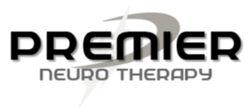
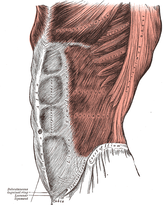
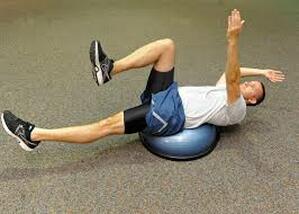
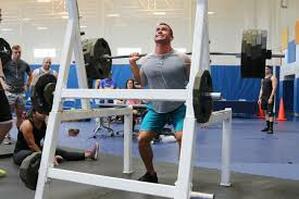

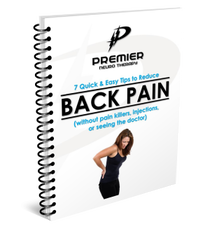
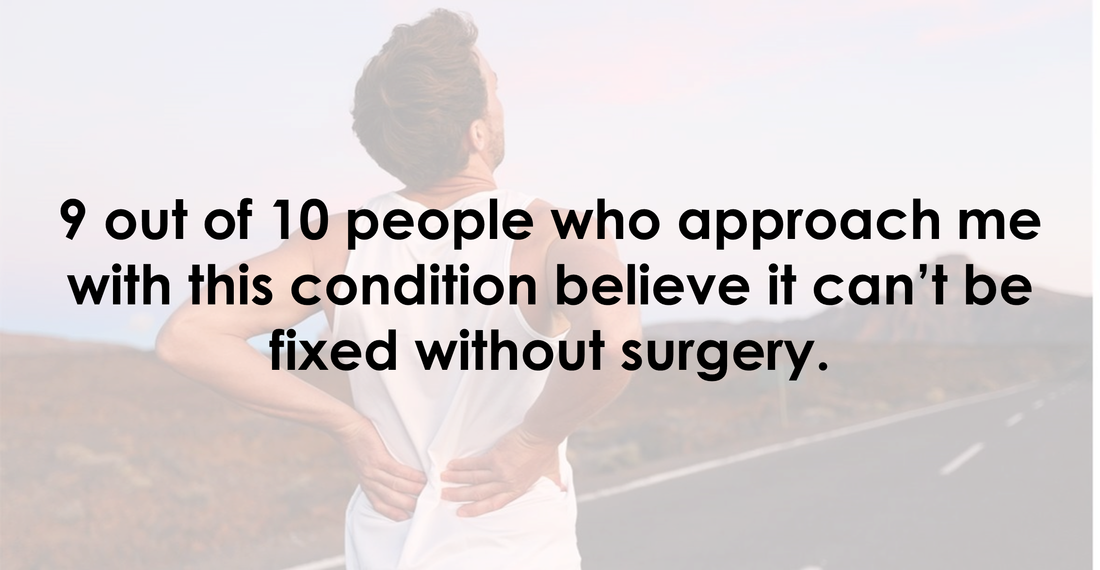
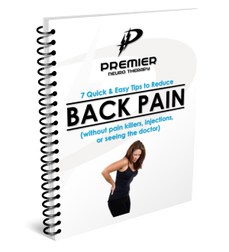
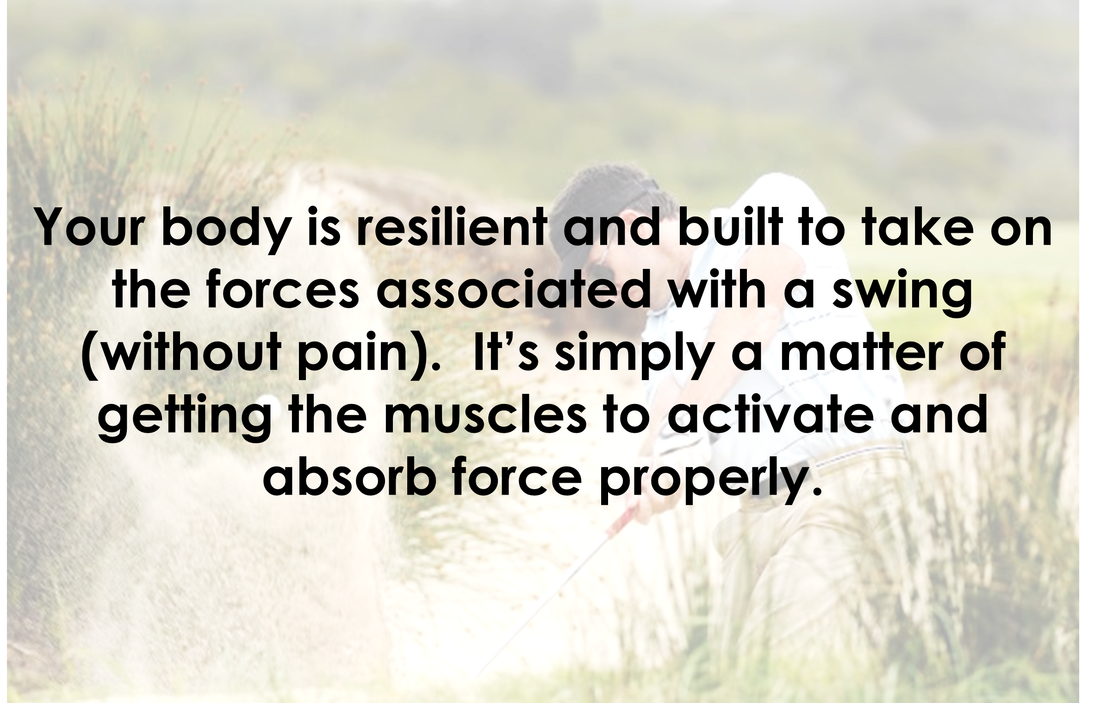

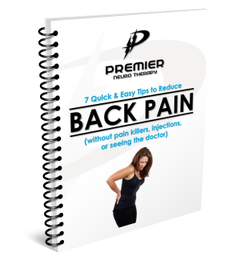
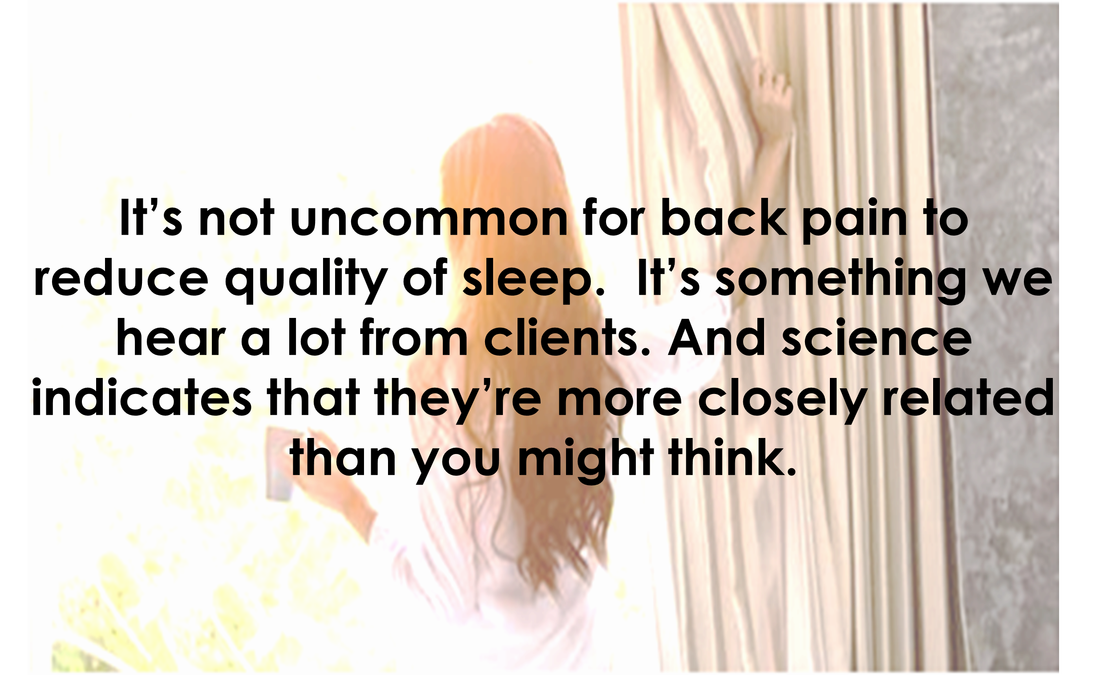
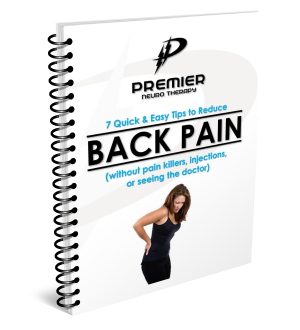
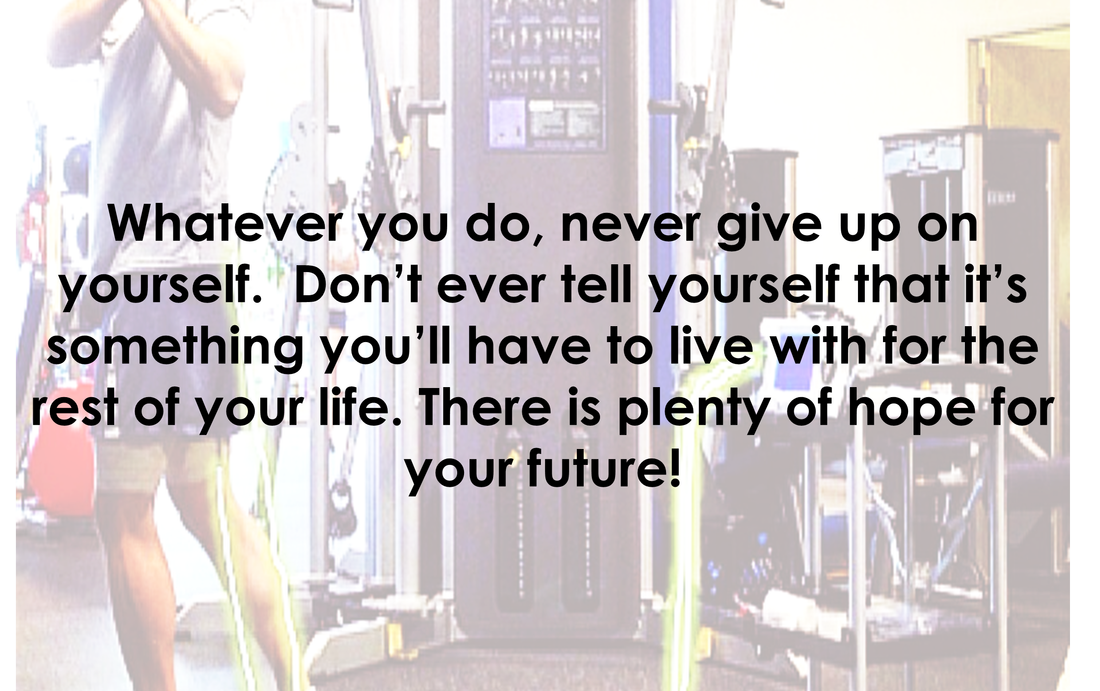
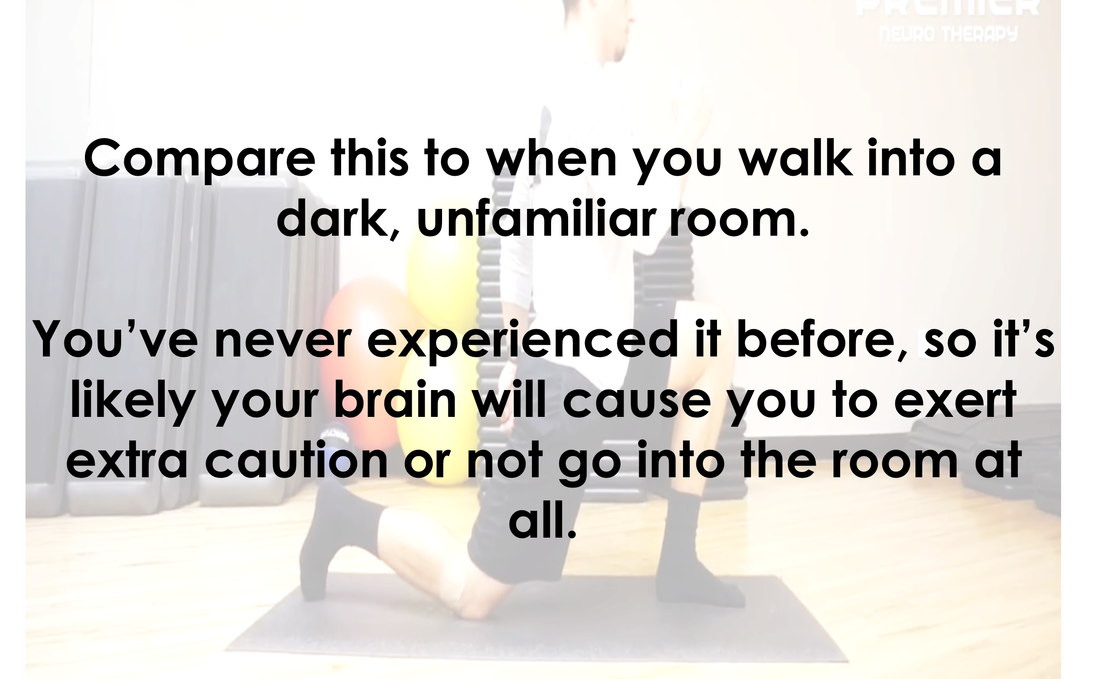
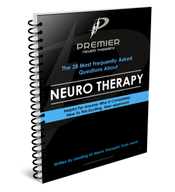
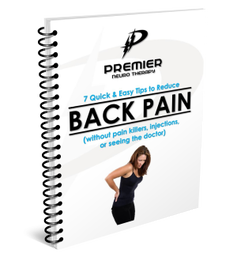
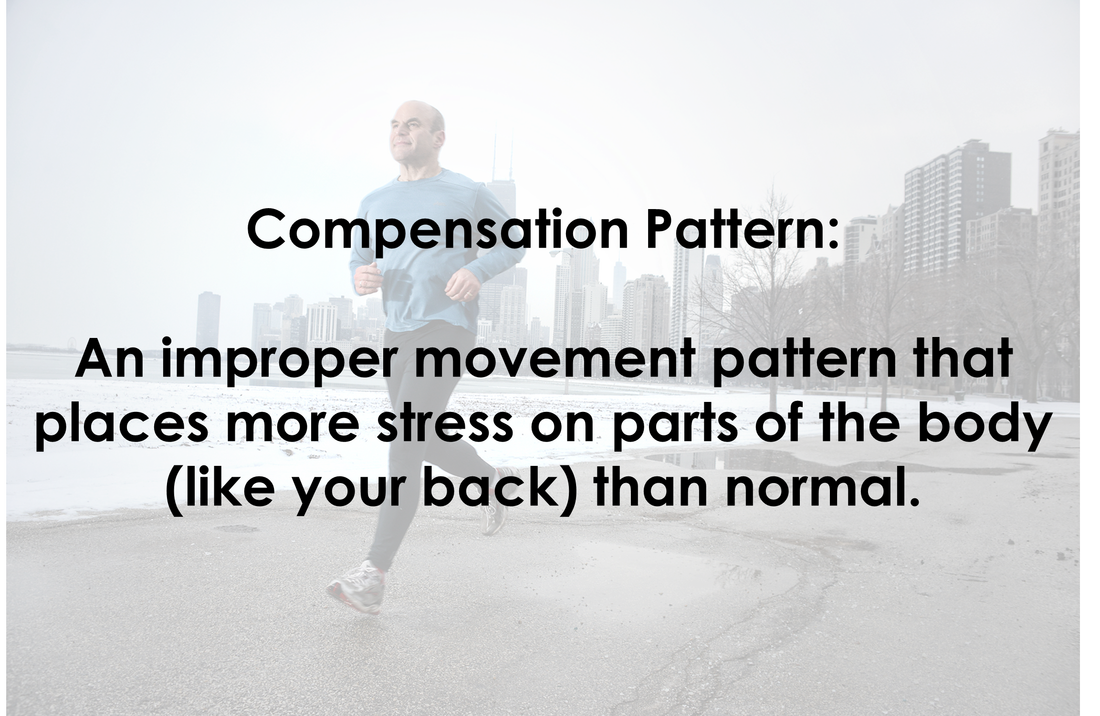
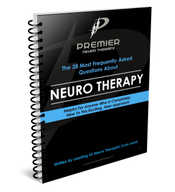

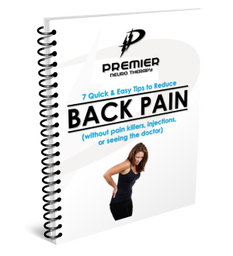
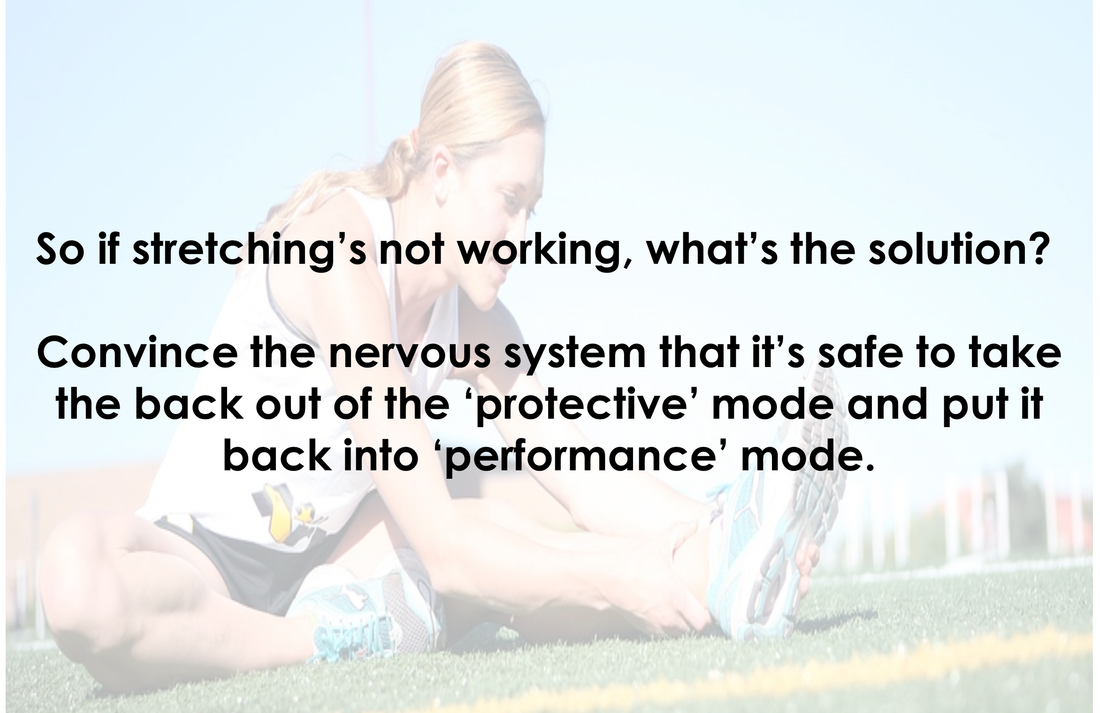
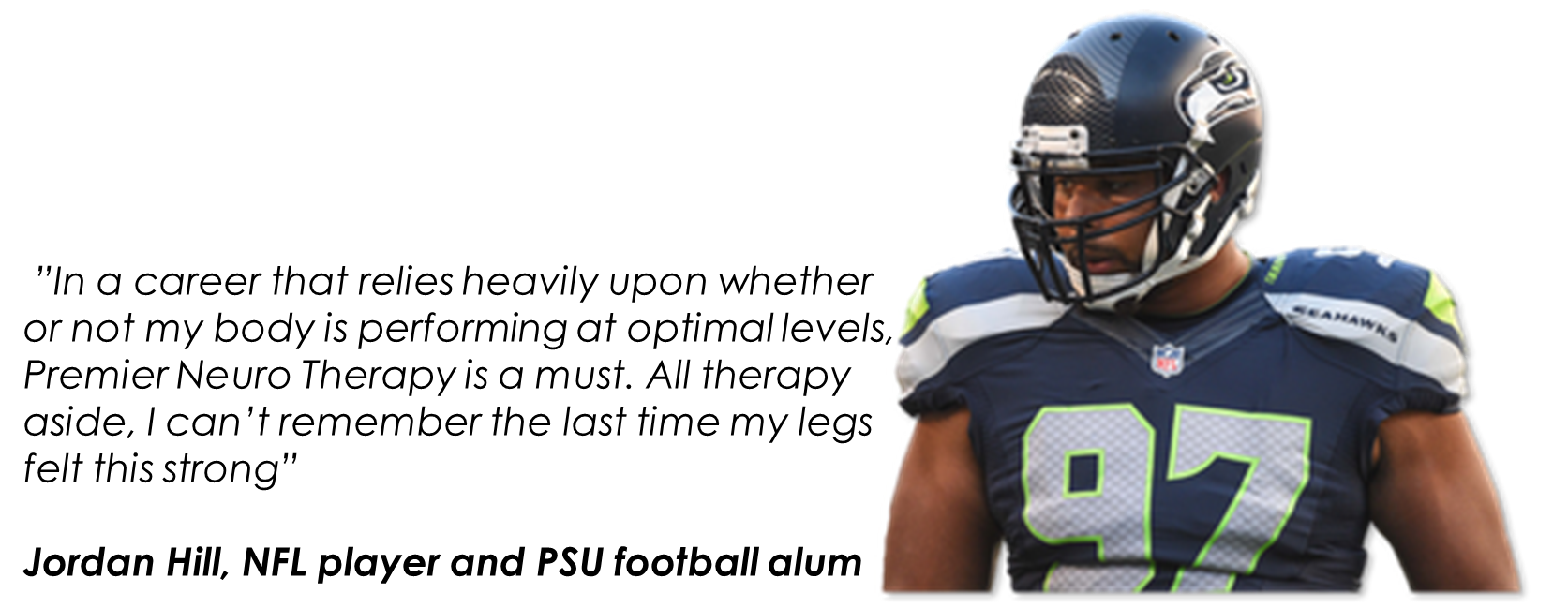
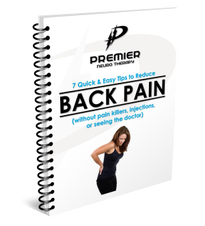
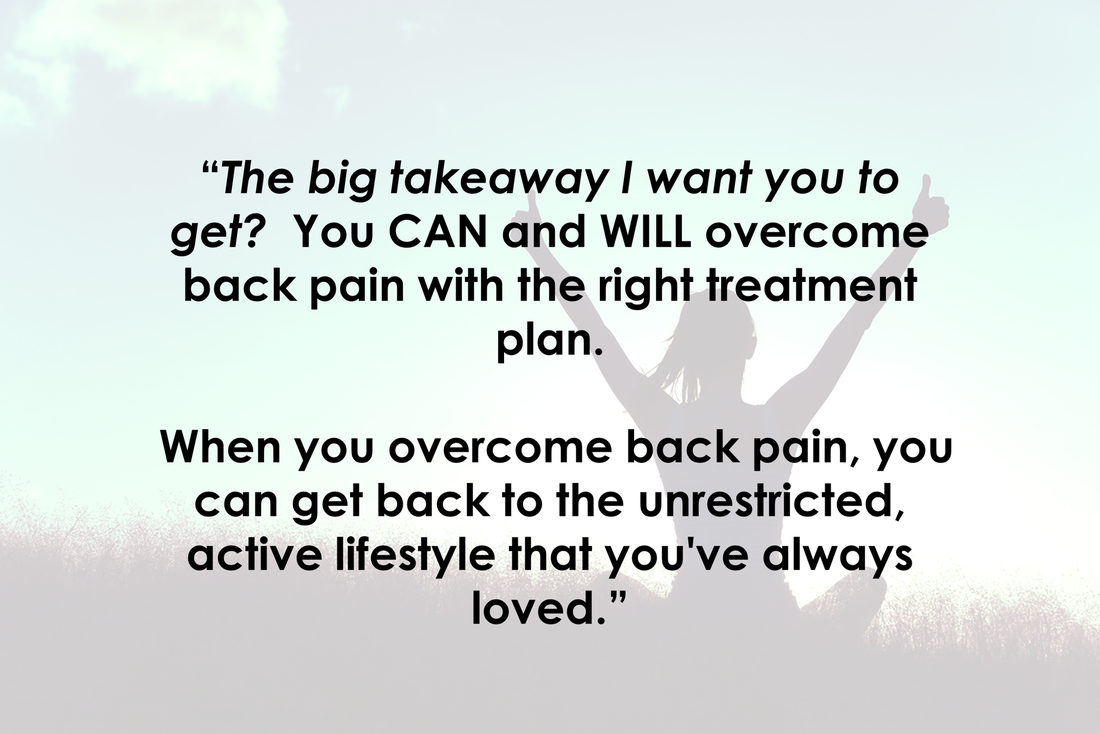
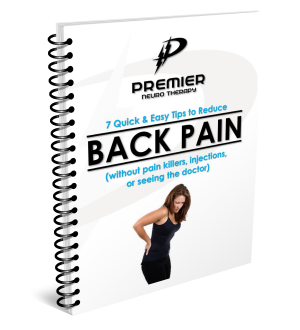

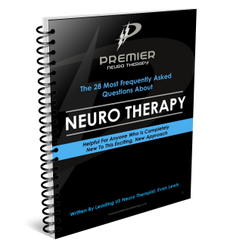
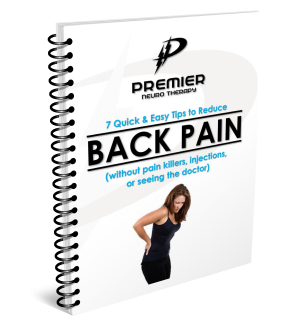
 RSS Feed
RSS Feed